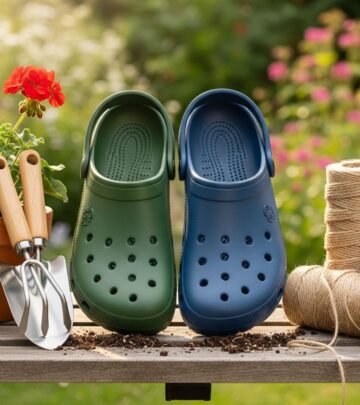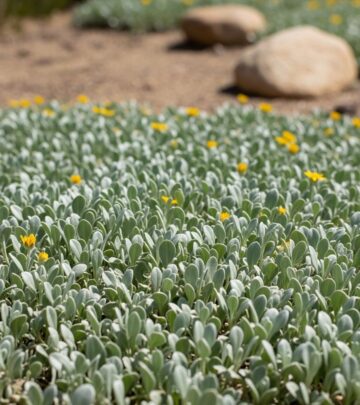Purple Lilies: 12 Magnificent Cultivars For Majestic Gardens
Discover the breathtaking beauty of purple lilies from delicate lavender to rich eggplant hues for your garden landscape

Image: HearthJunction Design Team
Purple lilies bring a touch of majesty to any garden with their striking colors ranging from soft lavender to deep eggplant. Most purple lily varieties belong to the Asiatic lily group or are hybrids that incorporate Asiatic genetics. These stunning perennials offer gardeners dramatic vertical interest, spectacular blooms, and in many cases, intoxicating fragrance that can transform an ordinary landscape into something extraordinary.
Whether you’re looking to create a dramatic backdrop with towering specimens or add pops of purple to your borders, there’s a purple lily variety that will perfectly suit your garden’s needs. Let’s explore 12 magnificent purple lily cultivars that deserve a place in your flowerbeds.
Purple Prince Lily
| Botanical Name | Lilium (Oriental-Trumpet) ‘Purple Prince’ |
| Plant Type | Bulb, perennial |
| Sun Requirements | Full sun to part shade |
| Height | 4-6 feet |
| Hardiness Zones | 3-9 |
The Purple Prince lily stands as one of the most impressive purple lily varieties available to gardeners. This Oriental-Trumpet hybrid produces massive upward-facing blooms that can reach an astonishing 8 inches in width. The flowers feature rich grape-colored petals complemented by striking yellow anthers and prominent black stamen, creating a dramatic color contrast that draws the eye.
At maturity, a single Purple Prince plant can produce between 20-30 blooms, making it a showstopper in any garden setting. With its substantial height of 4-6 feet, this lily creates a commanding presence in the landscape. While the stems are naturally thick and sturdy, it’s advisable to provide staking if your garden experiences high winds, as the large flower heads can act like sails in gusty conditions.
Purple Lady Lily
| Botanical Name | Lilium (Oriental-Trumpet) ‘Purple Lady’ |
| Plant Type | Bulb, perennial |
| Sun Requirements | Full sun to part shade |
| Height | 6-8 feet |
| Hardiness Zones | 3-9 |
For gardeners seeking truly spectacular vertical interest, the Purple Lady lily is an exceptional choice. This majestic hybrid can reach heights of up to 8 feet when mature, making it perfect for back borders or as a focal point in mass plantings. The thick, sturdy stems are adorned with whorls of lance-shaped foliage that create a shrub-like profile in the garden.
The flowers of Purple Lady are equally impressive, spanning 8 inches across with petals in various shades of violet accented with fuschia highlights and freckling. Adding to their visual appeal, the centers feature a striking contrast of white and chartreuse elements. Beyond their beauty, these lilies also offer a strong, pleasant fragrance that can perfume the surrounding garden area.
Growing and Caring for Purple Lilies
While purple lilies create a dramatic display in the garden, their care requirements are surprisingly straightforward. Understanding their basic needs will ensure these magnificent plants thrive in your landscape year after year.
Planting
Most purple lily varieties prefer well-draining soil that retains some moisture without becoming waterlogged. When planting lily bulbs, choose a location that receives full sun to partial shade, with protection from harsh afternoon sun in warmer climates. Plant bulbs in the fall or early spring, placing them about 4-6 inches deep and 8-12 inches apart, depending on the variety and anticipated mature size.
Watering Requirements
Proper watering is crucial for lily success. These perennials require consistent moisture from early spring through their blooming period, but overwatering must be avoided. The soil should never completely dry out, but standing water or puddles can quickly lead to bulb rot. After flowering, reduce watering significantly unless experiencing severe drought conditions. During the energy storage phase following bloom, lilies are particularly vulnerable to fungal issues, making proper drainage essential.
Fertilization
Purple lilies benefit from a balanced fertilizer applied in early spring when new growth emerges. A second application can be made just as the flower buds begin to form. Avoid high-nitrogen fertilizers that may promote lush foliage at the expense of flower production. After flowering, allow the foliage to naturally yellow and die back as the plant stores energy in its bulb for next season’s growth.
Winter Care
While most purple lily varieties are hardy in zones 3-9, providing a layer of mulch in colder regions helps protect the bulbs through winter. In very cold climates, consider adding a 3-4 inch layer of straw, pine needles, or leaf mulch after the ground freezes to prevent frost heaving during freeze-thaw cycles.
Designing with Purple Lilies
The various shades of purple lilies offer numerous design possibilities in the garden landscape. Here are some effective ways to incorporate these stunning flowers:
Creating Depth with Height Variation
Take advantage of the different heights available among purple lily varieties to create visual depth in your plantings. Position taller specimens like Purple Lady (6-8 feet) at the back of borders, with mid-height varieties in the middle, and shorter cultivars toward the front. This creates a layered effect that adds dimension to your garden beds.
Color Combinations
Purple lilies pair beautifully with many other garden colors. For dramatic contrast, plant them alongside bright yellows or oranges. For a more harmonious look, combine them with pinks, blues, and whites. The violet tones also work well with silver-leaved plants, creating a sophisticated color palette.
Container Growing
Many purple lily varieties can be successfully grown in containers, particularly the more compact cultivars. This allows for flexibility in positioning them around patios, entryways, or other areas where their dramatic blooms and potential fragrance can be fully appreciated. Ensure containers have excellent drainage and are large enough to accommodate the bulb’s root system.
Companion Plants for Purple Lilies
Selecting the right companion plants enhances the beauty of purple lilies while providing practical benefits like concealing fading foliage after bloom. Consider these complementary plantings:
- Ornamental Grasses – The vertical form of purple lilies pairs beautifully with the flowing texture of ornamental grasses, creating contrast in both form and texture.
- Hardy Geraniums – These low-growing perennials provide ground coverage that conceals the lower stems of lilies while adding complementary color.
- Hostas – In partially shaded locations, hostas make excellent companions, with their broad foliage providing contrast to the narrow leaves of lilies.
- Daylilies – Despite their name, daylilies are not true lilies but make harmonious companions with similar cultural needs and complementary blooming periods.
Common Pests and Problems
While generally resilient, purple lilies can face certain challenges in the garden. Being aware of potential issues helps ensure their long-term health and vigor:
Lily Beetle
The bright red lily beetle can quickly defoliate lily plants if left unchecked. Regular inspection of plants, especially the undersides of leaves, allows for early detection and control. Hand-picking adults and larvae or applying appropriate insecticides can manage infestations.
Botrytis
This fungal disease causes brown spots on leaves and flowers, particularly in humid conditions. Providing good air circulation around plants, avoiding overhead watering, and promptly removing affected foliage helps prevent its spread.
Bulb Rot
Excessive moisture can lead to bulb rot, particularly in heavy soils with poor drainage. Planting in well-draining soil and avoiding overwatering are the best preventative measures. If rot occurs, remove affected bulbs completely to prevent spread to healthy specimens.
Frequently Asked Questions (FAQs)
Q: When is the best time to plant purple lily bulbs?
A: The ideal time to plant lily bulbs is in fall or early spring. Fall planting (September to October in most regions) allows roots to establish before winter, while early spring planting should be done as soon as the ground can be worked.
Q: Do purple lilies come back every year?
A: Yes, purple lilies are perennials that return year after year in suitable growing conditions. With proper care, lily bulbs will multiply over time, creating larger clumps with more blooms each season.
Q: How long do purple lily blooms last?
A: Individual lily blooms typically last 7-14 days, depending on weather conditions and variety. However, because each stem produces multiple buds that open sequentially, the overall flowering period for a clump of lilies can extend for 3-4 weeks.
Q: Are purple lilies fragrant?
A: Fragrance varies significantly among purple lily varieties. Oriental-Trumpet hybrids like Purple Prince and Purple Lady typically offer strong, pleasing scents, while Asiatic lilies generally have little to no fragrance.
Q: Are purple lilies toxic to pets?
A: Yes, all true lilies are highly toxic to cats and can cause kidney failure if ingested. They are also moderately toxic to dogs. If you have pets, consider growing lilies in areas they cannot access, or choose pet-safe alternatives.
Purple lilies offer gardeners a magnificent way to add vertical interest, dramatic color, and in many cases, delightful fragrance to the landscape. From the towering Purple Lady to more compact varieties, there’s a purple lily to suit gardens of all sizes. By providing basic care and choosing appropriate planting locations, these spectacular perennials will reward you with years of breathtaking blooms that transform your garden into a showcase of royal purple splendor.
References
Read full bio of Anjali Sayee












